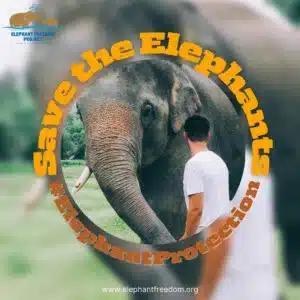Elephant Rescue Camps In Chiang Mai Thailand
Elephants are majestic creatures that have captured the hearts of people worldwide. But, unfortunately, they are often the victims of poaching, habitat destruction, and captivity. To eliminate these issues, elephant rescue camps have been established worldwide to provide a haven for these animals and help them recover from the abuse they have endured for far too long. The purpose of this post is to explore some of the different elephant rescue camps worldwide and the work they do in protecting and caring for these beloved animals.
Elephant Freedom Project was first organized in the 1990s with a simple mission, to rescue and save as many elephants as possible. Elephant Freedom Project works in concert with other elephant rescue camps to help rescue as many elephants as we can afford to support. By providing a unique setting to experience our elephant sanctuary personally and intimately affords us the opportunity to generate enough revenue to provide the needed medical care, nutrition, and a natural setting in the mountains of Thailand to allow the elephants to roam freely.
Elephant Freedom was Formally established in 2016; however, our various tribe members have cared for these majestic creatures for over twenty-five years. Their commitment has remained the same over all these years: providing a safe environment to house and care for rescued elephants. The sanctuary is one hour from the City of Chiang Mai, Thailand.
Elephant Rescue Camps
Another well-known elephant rescue camp is the David Sheldrick Wildlife Trust in Kenya. This camp was founded in 1977 by Daphne Sheldrick in memory of her late husband, David. The camp is focused on rescuing and rehabilitating orphaned elephants, many of whom have lost their mothers to poaching. The trust has raised and returned to the wild over 230 elephants. The trust also runs anti-poaching units, mobile veterinary units, and community outreach programs in the surrounding areas.
In South Africa, the Hoedspruit Endangered Species Centre (HESC) provides a safe home for elephants and other endangered animals. The center was founded in the 1990s by Lente Roode and has grown to become one of the largest elephant rescue centers in the country.
The center is home to over 30 elephants, many of whom have been rescued from circuses and zoos. The center provides a sanctuary for the elephants and allows visitors to interact with them and learn about their behavior and natural habitat.
In the United States, The Elephant Sanctuary in Tennessee is a 2,700-acre haven for elephants that have been retired from zoos and circuses. The sanctuary was established in 1995 by Carol Buckley and has grown to be the largest natural habitat refuge for elephants in North America. The shelter provides a safe and natural environment for the elephants to live in, and they can roam freely and interact with other elephants. The sanctuary also offers educational programs for visitors to learn about elephants and the issues they face in captivity.

In India, the Wildlife SOS Elephant Conservation and Care Center is a sanctuary for elephants rescued from abusive situations such as illegal logging, street begging, and circuses. The center is in the state of Uttar Pradesh, home to over 20 elephants. The center provides a safe and natural environment for the elephants. They also offer educational programs for visitors to learn about elephants and the issues they face in captivity.
Finally, in Indonesia, the Borneo Elephant Sanctuary is a sanctuary for elephants rescued from Borneo’s logging and tourism industries. The refuge is located in the province of Kalimantan and is home to over 30 elephants. The sanctuary provides a safe and natural environment for the elephants. They also offer educational programs for visitors to learn about elephants and the issues they face in captivity.
Elephant Nature Park also acts as another of several elephant rescue camps in Thailand. This camp is located in the northern province of Chiang Mai and was founded in the 1990s by Lek Chailert. The park is home to over 60 elephants, many of whom have been rescued from the illegal logging and tourism industries. The park provides a safe and natural environment for the elephants to live in, and they can roam freely and interact with other elephants. Visitors can also interact with the elephants and learn about their behavior and natural habitat.
In conclusion, elephant rescue camps worldwide play a vital role in protecting and caring for these majestic animals. From Thailand to South Africa, from the United States to India, these camps provide a safe and natural environment for the elephants.



